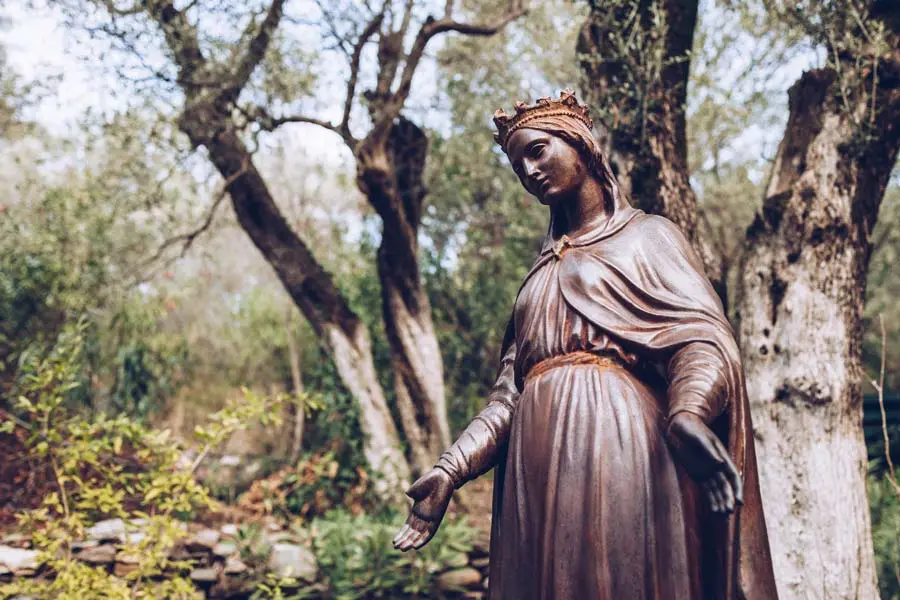
Æthelthryth (St. Etheldreda) Biography: Age, Husbands, Parents, Monastery, Death, Sainthood, Legacy
Æthelthryth was an Anglo-Saxon princess who became queen, abbess and saint. Her reputation rests less on battlefield exploits than on her remarkable commitment to religious life, her leadership in founding the monastery at Ely, and her enduring legacy in both Christian devotion and English cultural memory.
Her marriages for political alliance, her insistence on maintaining vows of virginity, her eventual withdrawal into monastic life, and her posthumously celebrated sanctity all made her one of the most venerated women in early medieval England.
Trending Now!!:

Profile
- Full name: Æthelthryth (also Æðelþryð, Æþelðryþe; Latinised as Etheldreda)
- Nickname: St. Etheldreda; Audrey
- Date of birth: about 4 March 636
- Age: Deceased
- Gender: Female
- Place of birth: Exning, Suffolk, East Anglia, England
- State of origin: East Anglia
- Nationality: Anglo-Saxon (English)
- Profession: Princess; Queen; Abbess; Religious leader; Saint
- Parents: Father: King Anna of East Anglia; Mother: probably Sæwara (Saewara)
- Siblings: Wendreda; Seaxburh of Ely; plus other sisters who likewise became religious founders
- Spouse: Tondberct (first husband, prince of the South Gyrwe); Ecgfrith, King of Northumbria (second husband)
- Children: None
- Relationship status: Deceased; widowed prior to entering religious life
- Religion: Christian; Anglo-Saxon Church (venerated in Catholic, Orthodox and Anglican traditions; feasts 23 June and 17 October).
- Ethnicity: Anglo-Saxon (Germanic tribes in early medieval England)
- Net worth: Not quantifiable in modern currency.
Early Life and Education
Æthelthryth was born around 636 in Exning, Suffolk, as the daughter of King Anna of East Anglia.
Her family was Christian, and East Anglia was then undergoing Christianisation.
Tradition places her baptism and early piety in this milieu. From early on she is said to have made a vow of virginity.
Around 652 she entered into her first marriage to Tondberct (Tondberht) of the South Gyrwe.
This marriage was arranged for political alliance, yet she persuaded her husband to honor her vow by keeping the marriage unconsummated.
After Tondberct’s death (c. 655), Æthelthryth retired to the Isle of Ely, lands she had received as part of her “morning gift.”
Personal Life
Æthelthryth married Ecgfrith of Northumbria in 660, again for political purposes.
Although initially agreed that she should continue to live in virginity, over time Ecgfrith sought heirs and pressed marital claims, which brought him into conflict with Bishop Wilfrid, her spiritual counsellor.
About 672, fearing coercion, Æthelthryth left Northumbria—accompanied by two nuns—and returned to Ely.
She founded a double monastery (for monks and nuns) at Ely in 673 and later served as its abbess.
Some traditions also credit her (as queen) with granting land that facilitated the building of Hexham Abbey.
She did not have children; her commitment to her vow of virginity was central to her identity and saintly narrative.
Career
In her capacity as queen, Æthelthryth’s role was politically symbolic, cementing alliances through marriage.
Her principal achievement was establishing and governing the monastery at Ely from c. 673 until her death in 679, overseeing both spiritual discipline and estate administration.
Her cult grew rapidly after her death and was prominent through the Middle Ages.
Net worth
Æthelthryth’s “wealth” consisted of (1) the Isle of Ely as morning gift from Tondberct; (2) endowments and lands supporting Ely Abbey; and (3) the economic rights/rents typical of early medieval ecclesiastical estates.
Death
Æthelthryth died on 23 June 679 at Ely.bBede records that she suffered a neck-tumour which she interpreted as divine discipline for youthful vanity in wearing heavy necklaces.
Sixteen years after her death, her sister Seaxburh translated her remains to a white marble sarcophagus; her body was found incorrupt, which medieval Christians regarded as a sign of sanctity.
Social Media
N/A
NOTICE!! NOTICE!! NOTICE!!
At TheCityCeleb, we strive to provide accurate and up-to-date biographies and entertainment news, focusing on celebrities. Our editorial team researches information from reputable sources, including interviews, official statements, and verified media.If you spot an error or have additional details, please contact us at editor@thecityceleb.com. We value your feedback and are committed to maintaining trustworthy content.


